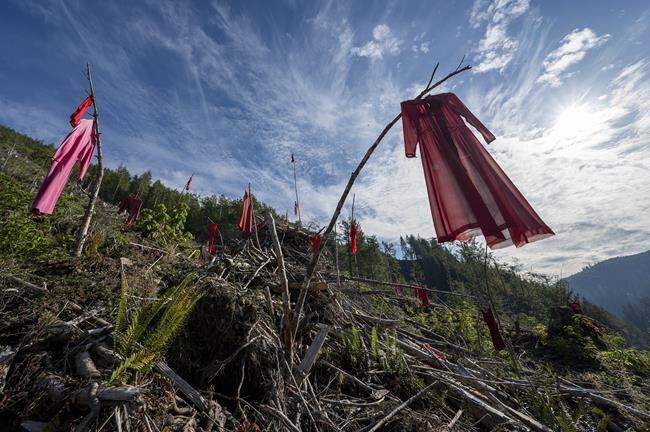OTTAWA — A new Statistics Canada report has found that homicides of Indigenous women and girls are less likely to result in the most serious murder charges than cases in which victims were non-Indigenous.
The study, released Wednesday, looked at how homicides of Indigenous women and girls moved through the court system, and how the outcomes of those cases compared to those of non-Indigenous women and girls.
More than half of cases involving non-Indigenous women and girls between 2009 and 2021 resulted in charges of first-degree murder.
But when the victim was Indigenous, police laid or recommended that charge half as often. The less-serious offences of second-degree murder and manslaughter were more common.
During that time period, StatCan found, Indigenous women and girls were killed at a rate six times higher than that of women and girls who were not Indigenous.
The report's release coincided with the Sisters in Spirit Day and the National Day of Action for Missing and Murdered Indigenous Women, Girls and 2SLGBTQQIA+ people.
2SLGBTQQIA+ refers to people who are two-spirit, lesbian, gay, bisexual, transgender, queer, questioning, intersex, asexual and other sexual orientations and genders.
Advocacy organizations used the day as a rallying cry to raise awareness about violence towards these groups, and as a call to action to improve their safety.
The StatCan study said 87 per cent of homicides of Indigenous women and girls between 2009 and 2021 solved, compared to 90 per cent of cases where the victim was a non-Indigenous woman or girl.
Both categories had the same conviction rate of 55 per cent.
The report also said most Indigenous women and girls were found to be killed by someone they knew, and those accused in most cases were also Indigenous.
In 2019, the federal government released the final report of the National Inquiry into Missing and Murdered Indigenous Women and Girls, which included 231 calls to justice.
Two years later, the government released a national action plan that sought to address those calls.
The Native Women's Association of Canada has been keeping track of the government's annual performance on implementing the plan, and called Ottawa's progress a "failure" in its most recent report.
Few of the promised actions have been completed, while others have seen "marginal progress" or remain untouched, the June 2023 report says.
In a joint statement on Wednesday, Crown-Indigenous Relations Minister Gary Anandasangaree, Northern Affairs Minister Dan Vandal, Indigenous Services Minister Patty Hajdu and Minister for Women and Gender Equality and Youth of Canada Marci Ien promised to improve.
"For all the families, survivors, and communities living with the loss of their missing and murdered loved ones, we need to do better, and we will do better."
Speaking with reporters Wednesday morning about the StatCan report, Anandasangaree said there are issues of systemic racism within the criminal justice system.
"There's definitely a lot of work to do and I don't think the report today should be shocking. It's sadly part of the colonial legacy that we are trying to untangle."
This report by The Canadian Press was first published Oct. 4, 2023.
Alessia Passafiume, The Canadian Press



